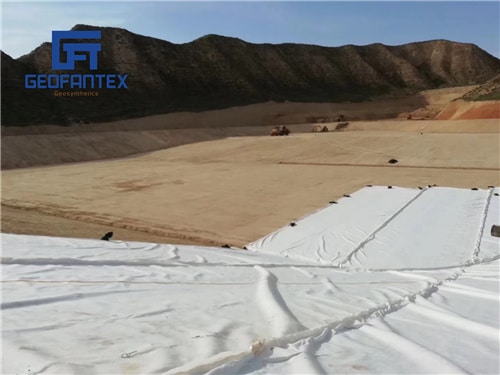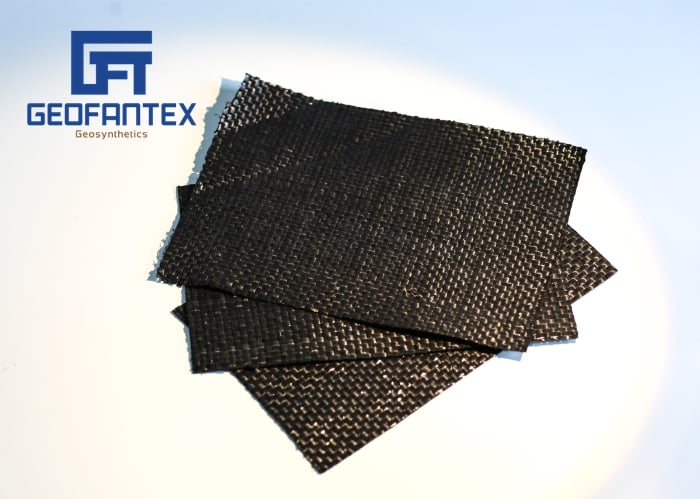+86-159 9860 6917
info@geofantex.com
geofantex@gmail.com
+86-400-8266163-44899
What Is Geosynthetics?
What Is Geosynthetics?
Geosynthetics are a type of material that is used for various purposes, including in the construction of buildings and for waterproofing. They are usually made from a membrane that has been woven or stitched. They can also be made from fabric. They are used to keep a building waterproof, or to seal a drain. They are very durable, which means that they can be used for a long time.

Geosynthetics

Geosynthetics are a form of geotechnical engineering that addresses the soil-water interaction. These materials are often used to prevent erosion, stabilize slopes, and prevent pollution. They are also widely used in the construction industry.
There are many types of geosynthetics. These include geomembranes, geogrids, and geocomposites. They can be used with soil, rock, and other materials. They can be designed to cover curved surfaces. These products are a good alternative to natural solutions. However, they do require careful handling and installation. The proper additives must be used to ensure long-term performance.
Geosynthetics can be categorized into a dozen different categories. These include drainage filters, soil sprays, geocomposites, geogrids, and geotextiles. Each of these groups has its own applications and unique functions. In the field of civil engineering, these products are an ideal alternative to traditional designs. They are durable and offer high levels of tear resistance.
Depending on the type of project, geosynthetics may be part of the design or a component of a system. For example, drainage filters are used to reduce flooding and prevent soil erosion. They are also effective in preventing pollution from contaminated dust and water.
Geotextile Material

A geotextile is a flexible, permeable fabric made of synthetic fibers. These products are used in many construction and building projects. These materials can be manufactured by weaving or random non-woven manufacturing methods. They are used in the field of geotechnical engineering.
These fabrics are used to prevent erosion and erosion damage to soil and rock. They can also be used to reinforce the mass of the soil. A well-designed geosynthetic product can meet its intended functions easily and cost-effectively.
These materials are usually used in the lining of liquid storage facilities, landfill liners, sand-core dike, or even as a containment layer. They are manufactured using a variety of polymers. The most widely used material is High-Density Polyethylene. These materials can be applied to a wide variety of different soils. They are often used on steep soil slopes, such as those found on road embankments. They also perform the role of drains in less-permeable soils.
Geotextile Fabric

A geotextile fabric is a type of synthetic fabric that is used in various engineering and construction applications. These fabrics are made of man-made polymers. They are designed to be used in the soil to improve its structure and performance. These fabrics are permeable to gases and water and are typically used to provide separation between layers of soil.
There are three basic types of geotextile fabrics. They include woven, nonwoven, and spunbonded. These materials have different strengths and are used for specific applications.
Woven geotextiles are a strong, finely spun strips of material. They are commonly used in the construction industry to reinforce roads, driveways, and other applications. There are two major types of woven geotextiles, plain weave and twill weave. The twill weave is a combination of strands that are interlaced at right angles.
Unlike other types of fabrics, woven geotextiles are semi-permeable. They have high warp resistance and tensile strength.
Membrane Geotextile

A geotextile membrane is a type of waterproof fabric that is used in a wide variety of applications. It can be woven or non-woven. It is made up of synthetic fibers that are bonded together by heat. It is available in a range of different designs and colours.
Geotextile membranes are widely used in civil engineering projects. They can help to control the flow of water and keep debris out of the drainage system. They are also a vital part of landscape projects. They can also prevent soil from mixing with subgrade and help with weed control.
Geotextile membranes are usually supplied in rolls measuring 4.5m by 100m. There are also non-woven options, which are manufactured using a needle punching process. They are usually black, but they can also be orange. Both woven and non-woven geotextiles can be used to provide separation and filtration functions. They can be used in a number of different ways, for instance, as a weed control fence or as an erosion control barrier.
Get Free Sample
We’ll respond as soon as possible(within 12 hours)























